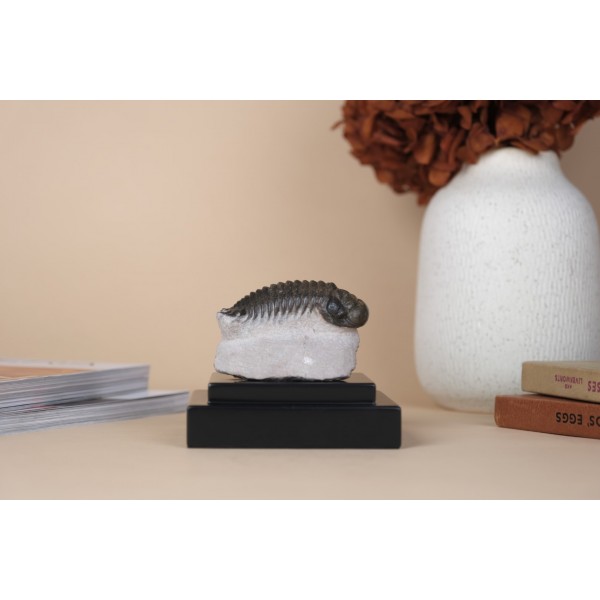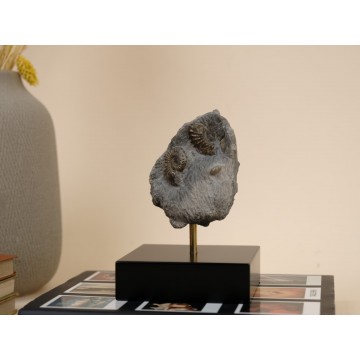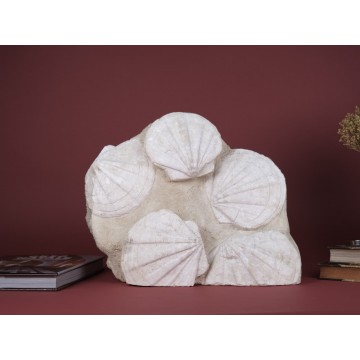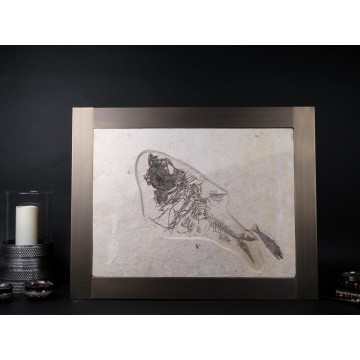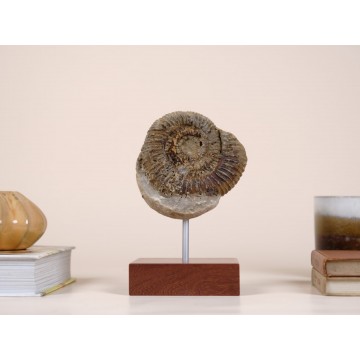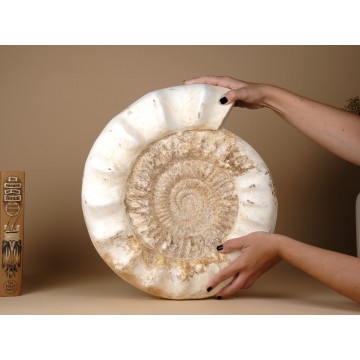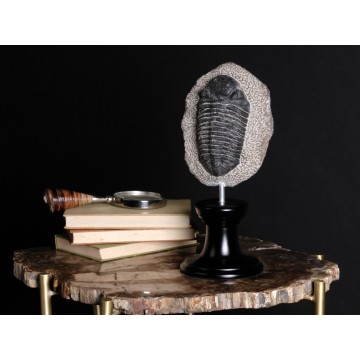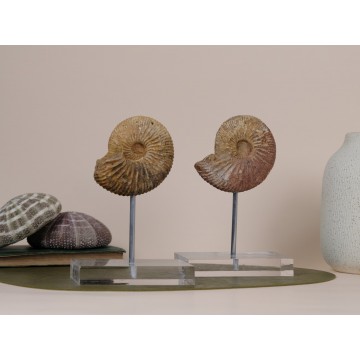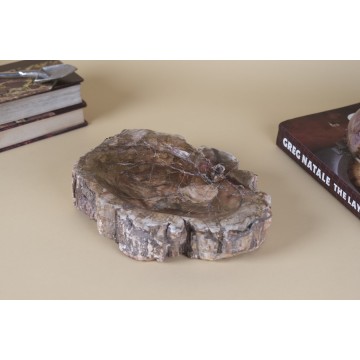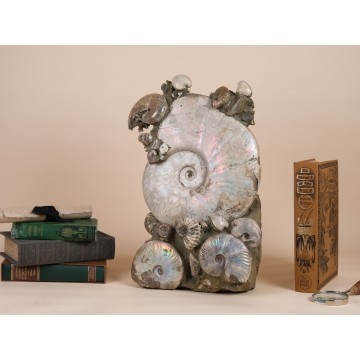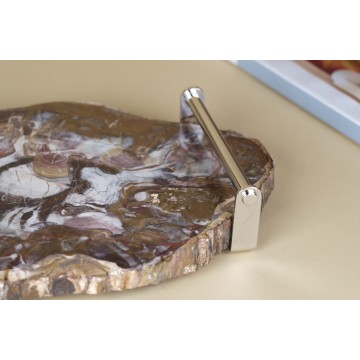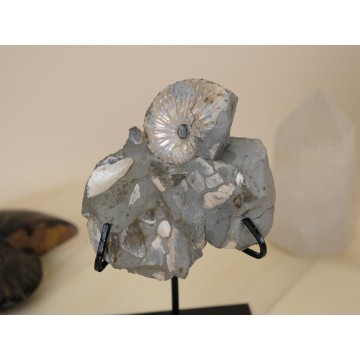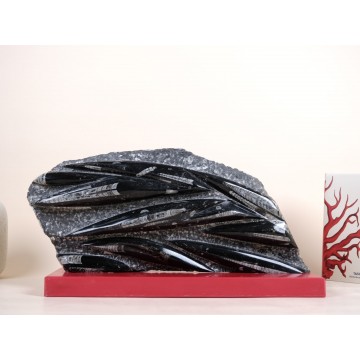Superb, unbroken slab filled with wonderful naturally occurring orthoceras fossils that was once part of the prehistoric ocean floor over 400 million years ago.
As these forms of prehistoric squid were covered in ocean sediments prior to fossilization, the majority of the creatures will be facing in the same relative position, having been lined up by currents on the sea floor prior to being buried.
The fossils are exposed and given a high polish to better view the creatures from their surrounding matrix. The slab features very high relief as well as dramatic texture and detail they had tentacles and ink sacs, much like present-day squid.
Except for belemnites, cephalopods had external shells with hollow internal chambers separated by walls called septa.
Devonian period, circa 410 million years, Anti-Atlas Mountains - Southern Morocco.

